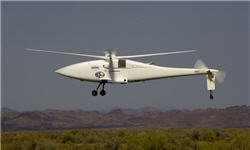Boeing’s A160T Hummingbird unmanned helicopter could be flying again soon. It has been grounded since September after an aircraft crashed in Belize during a demonstration deployment with U.S. Special Operations Command.
The cause of the crash has not been released but was related to the tail rotor, says Ernie Wattam, Boeing A160T programme manager. A fix has been tested in the wind tunnel. Demonstrator and production aircraft will be retro-fitted. All data have been provided to the airworthiness authorities and clearance to resume flights is expected shortly, he says. Return to flight is key, as there are several demonstrations and deployments planned for this year, including the U.S. Marine Corps cargo unmanned aircraft system programme.
The first Block 2 production A160T has rolled off the assembly line in Mesa, Ariz., and will be retained by Boeing as a test asset, Wattam says. The next two aircraft have been sold to the Marines for the cargo UAS programme, and the third will be used as a spare to support deployment, he says.
The A160T and Lockheed Martin/Kaman unmanned K-Max will undergo a quick-reaction demonstration at Yuma Proving Ground, after which the Marines will decide which system to deploy to Afghanistan to assess the military utility of unmanned cargo resupply to remote forward operating bases.
For the second planned deployment, the A160T will carry the Argus-IS giga-pixel wide-area surveillance video sensor developed by BAE Systems for the U.S. Defense Advanced Research Projects Agency (Darpa).Three A160s have been transferred to the U.S. Army for this demonstration — one from Darpa and two from Special Operations Command.
Boeing also has begun work on marinizing the A160T so that it can compete for the U.S. Navy’s Medium-Range Maritime UAS requirement for a ship-based multirole vertical-takeoff-and-landing unmanned aircraft to enter service around 2019.
Source: Aviation Now

